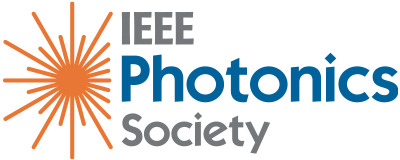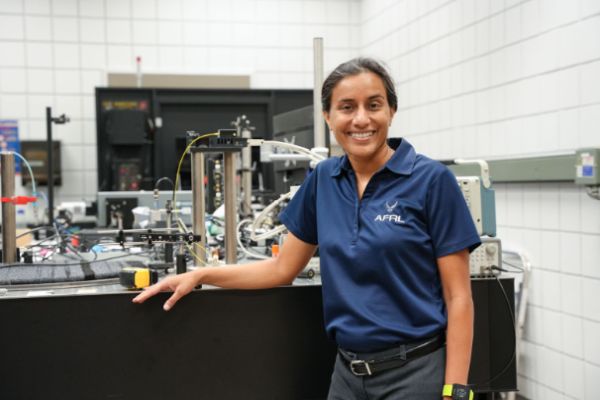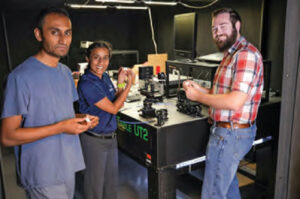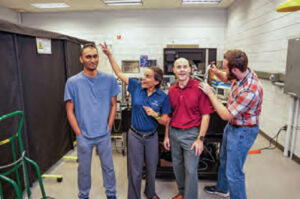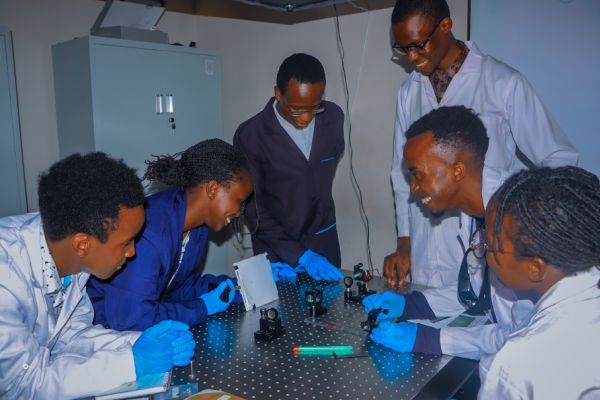
What is Your Current Profession? How Does Your Work in Photonics Impact Innovation and Benefit Humanity?
My current title is Principal Research Electronics Engineer. As we all know, Photonics is the science of light centered around generating, controlling, and detecting light waves and photons, which are particles of light. Visible light is only a small part of the spectral range that photonics encompasses. Our team conducts research in a wide variety of wavelengths, from radio frequency to visible and infrared light. One major focus of my research is plasmonics. Plasmonics combines the best of both electronics (extremely small size) and photonics (ultrafast speed). Surface plasmons are electromagnetic waves that propagate along the interface of a conductor and a dielectric. Plasmonic circuits can thus carry optical signals and electric currents through the same thin metal circuitry, making photonics and electronics possible on the same chip. These technologies literally help us “see better” and have many applications in sensing, communications, defense, energy harvesting,
biomedicine, and even forensics.
What Volunteer Leadership Position(s) Do You Hold for the IEEE Photonics Society? What Do You Want to Accomplish This Year/Next Year Within Your Position(s)?
I hold three volunteer positions in the IEEE Photonics Society as a General Chair for IEEE RAPID, member of Publications Council and member of Professional Advancement Committee. For RAPID, this was our first year back in-person after the pandemic. The IEEE Research and Applications for Photonics In Defense (RAPID) conference is an annual international conference held in Northwest Florida that aims to bring together government, academia and industry in a global forum to present new fundamental basic research, innovative technologies and build collaborations to solve critical security and defense challenges. The conference also includes a STEM, Women in Photonics, and networking session. Our goal this year is to grow the breadth of the conference to include more forums and tutorials that add a different flavor to the experience. In addition, the conference is looking for partners to grow the industry expo as well as professional development portions to include other practitioners of photonics, beyond scientists and engineers, including technicians and manufacturing experts to cultivate their interests as well. Within the Publications Council, I will work hard to take up initiatives that improve the impact factor of existing journals while considering proposals to start a fast to publish and high impact journal with two primary goals for the journal: (i) Growth of impact factor through increased technical depth and selectivity; and (ii) Expanding the breadth of the journal into research topics that are new and highly relevant to photonics, and multidisciplinary domains that rely on photonics.
Why Photonics? What Was Your “Photonics Moment?” (Personal background story, etc.)
“My parents raised my sisters and me to believe we could do anything.” It’s the kind of deep support that propels you to work hard to be at the top of your field. I was inspired early to use my imagination and math skills to solve problems, and I was captivated by any project that involved light, from beautiful diffraction patterns to reflections in a kaleidoscope. Today, the study of light is the centerpiece of my mission to devise ground-breaking optical technologies for the Air Force.
My advisor always said your graduate work is a launch pad not an end goal, and what better field to embark on a career than one like photonics which offers endless possibilities to make a difference!
What About Our Society’s Mission and Work Motivates You?
The Photonics society has a variety of work that is included in its mission. It is this breadth that is so attractive, not only technically which we all know spans everything from simulation and modeling to fabrication and devices in photonics to its applications. This breadth is seen in its journals and conferences,
which is why I enjoy going to them because you can not only deep dive into your own field but also truly broaden one’s horizons. Additionally, the society is very cognizant of development of the individual scientist or engineer. The numerous programs like Women in Photonics and Professional Advancement Council (I’m a part of this one) really demonstrate the holistic approach the society takes to research and education progress. And then finally, there are the variety of outreach programs that the society conducts. There is nothing like seeing a young student excited about photonics and being able to “see” themselves involved in R&D and finding a place in the field.
Why Do Conferences Matter? How Do Conferences Boost the Impact of Scientific Discovery and Technical Dissemination?
In a world where technology is rapidly changing, collaborations and multidisciplinary work is the only way to solve research challenges and foster the next generation of scientific discovery. But there is so much more to conferences than just seeing the latest and greatest of what research has to offer. They are also the link to our peers and in-person discussions that spur and lead to broad multidisciplinary scientific discovery.
These discussions with colleagues in the community were sorely missed during the pandemic and brought to the forefront how important these interactions are to encouraging innovation. Conferences are also where I always find those breakthroughs presented which while not completely vetted are still pertinent and cutting edge. While journals will always remain our resource for in-depth articles, peer reviewed conference provide the essential link to new research.
